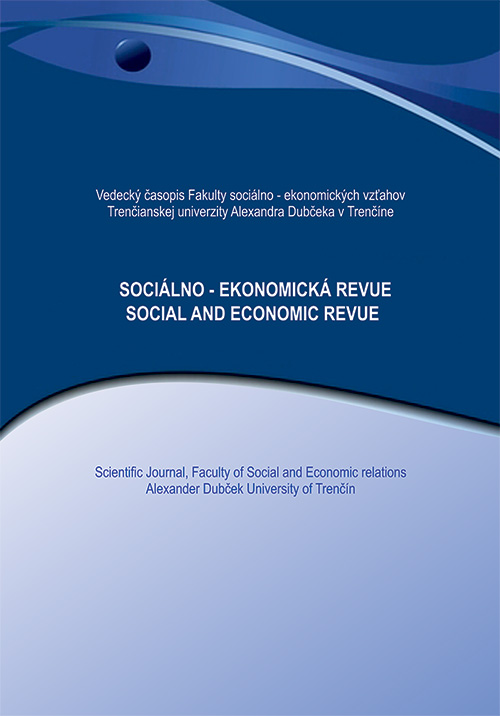ROLE OF SMES IN COMPETITIVENESS, COMPARISON OF HUNGARIAN SMES WITH EU SMES
SMEs play an important role in the country's economy. SMEs employ more than two thirds of the workforce and generate more than half of the added value in EU-28 until 2019. The importance of small businesses is also taken seriously by the EU, and the European Charter for Small Enterprises. Improving the competitiveness of SMEs is one of the 11 thematic objectives for Cohesion Policy in 2014-2020. Access finance for investments through grants, loans, loan guarantees, venture capital. Forge valuable links with research centres and universities to promote innovation. The data were taken from the World Economic Forum database. Research analysed the following sub-areas: Role of SMEs in competitiveness, presentation of problem areas, comparison of domestic values with EU average according to SBA Facht Sheet database with using digital system.
The Hungarian National Bank depicts the most important aspects needed to improve competitiveness in a pyramid model, culminating in sustained catch-up and growth. Hungary ranked 60th out of 137 countries in the World Economic Forum's in 2017-2018 competitiveness ranking. In Hungary SMEs are not very development-minded, but it is a positive development that they receive a significant share of grant funding.
Release: 2020/2 Pages: 52-59 JEL classification: D40, D24, L20
DOI:
Keywords: Cohesion Policy, Innovation, Investment, Venture capital, WEF
Section:
Contacts:
Andre Vajda, PhD Student
Faculty of Economics and Social Sciences
Szent István University,
Páter Károly u.1.
2100 Gödöllő
Literature:
Borjas, G. J. (2001): Does Immigration Grease the Wheels of the Labor Market? Brookings Papers on Economic Activity, Vol. 32. No. 1. 69-134. pp.
Borsi B. (2005): The business environment and domestic competitiveness. In: European Mirror. 2005/11. 61-78. pp.
Bozsik N. (2011): Economics of the European Union. SALDO Financial Consulting and IT Co. Budapest, 1-242. p.
Chikán, A. & Czakó, E. (2009): Competing with our global companies on the threshold of the new millennium. Akadémiai For rent Budapest, 401. p.
Czakó E. (2000): Competitiveness at the Industry Level. Doctoral dissertation, University of Economics and Public Administration Budapest
Csath M. (2010): Competitiveness Management. National Textbook Publisher Budapest, 336 p.
Csath M. (2016): Economic Growth, Wage Increase; which is the correct order. Hungarian Nation, LXXIX. Vol. No. 252 8 p.m.
Dupcsák Zs. & Marselek S (2015): The role of SMEs in investment and employment in the regions. Conference on Management and Management. Kecskemét College Kecskemét, 43-47. pp.
European Commission (2004): European Charter for Small Enterprises 2004. Luxembourg. Office for Official Publications of the European Communities
EUROPEAN COMISSION (2005): COM (2005) 551 final: Implementing the Community Lisbon Program Modern SME Policy for Growth and Employment. Brussels, 1-12. p.
EC (European Commission, 2016): European Innovation Scoreboard. EU Member States Innovation Performance, 93. p.
EC Enterprise and Industry DG (2019): SBA Briefing 2018 Hungary. 1-17. p.
European Commission (2020): EU regional and urban development. Regional Policy: SME Competitiveness. Retrieved from: https://ec.europa.eu/regional_policy/en/policy/themes/sme-competitiveness/
Guzi, M. - Kahanec, M. & Mýtna Kureková, L. (2018): How Immigration Greese Is Affected by Economic, Institutional, and Policy Contexts: Evidence from EU Labor Markets. Kykl Vol 71. No. 2. 213-243. pp.
Hárs, Á. (2018): Increasing emigration - opportunities, hopes, labor market effects. In: Kolosi T. - Tóth I. Gy. (Ed.) Social Report - 2018. TÁRKI Budapest, 81-101. pp.
Kahanec, M. – Pytliková, M. & Zummermann, K. P. (2016): The Freee Movement of Workers in an Enlarged European Union: Institutional Underpimings of Economia Adjusment. Megjelent: Kahanec – Zimmermann (szerk.) (2016) 1-34. p.
Kállay, L. & Lengyel, I. (2008): Main features of the internationalization of Hungarian small and medium-sized enterprises before EU accession. Entrepreneurship and Innovation. Vol 2. No. 1. 54-76. pp.
Lakatos, Zs. (2015): How much do domestic SMEs mean? Business - Tax Retrieved from: http://ado.hu/rovatok/cegvilag/mennyit-jelentenek-a-hazai-kkv-k
Ministry of Innovation and Technology (2019): Strategy for Strengthening Hungarian Micro, Small and Medium Enterprises 2019-2030. Budapest, Hungary
Ministry of National Economy (2013): Strategy for Small and Medium Enterprises 2014-2020. Draft Budapest, 1-85. p. Budapest, Hungary
MNB (Magyar Nemzeti Bank, 2019): A versenyképesség mérésének módszertana. Budapest, 1-24. p.
Némethné Gál, A. (2009): The competitiveness of small and medium-sized enterprises. Széchenyi István University Győr, PhD thesis, 1-241. p.
OECD (2009): OECD Science, Technology and Industry Scoreboard 2009, OECD
OECD (2016): Measuring Science. Technology and Innovation. OECD Publiching, Paris
Szucs, Cs. (2014). Employment, competitiveness Gyöngyösi Small Area. PhD thesis, SZIE Gödöllő, 1-244. p. Retrieved from: http://www.ksh.hu/htm/l/indi1 3 1.html
Trendov, M. N., Varas, S. & Zeng, M. (2019): Digital technologies in agriculture and rural areas – Status Report Rome, Italy, Food and Agriculture Organization of the United Nations (FAO) (2019) , 140 p. ISBN: 9789251315460
WEF (World Economic Forum): The Global Competitiveness Report 2017–2018. Retrieved from:
https://www.weforum.org/reports/the-global-competitiveness-report-2017-2018
Zimmermann, K. F. (2016): Refugee and Migrant Labor Market Integration: Europea in Need of a New Policy Agenda, Princeton University and UNU-MERIT Draft. EUI Conference on the Integration of Migrants and Refugees, szeptember 29-30.


